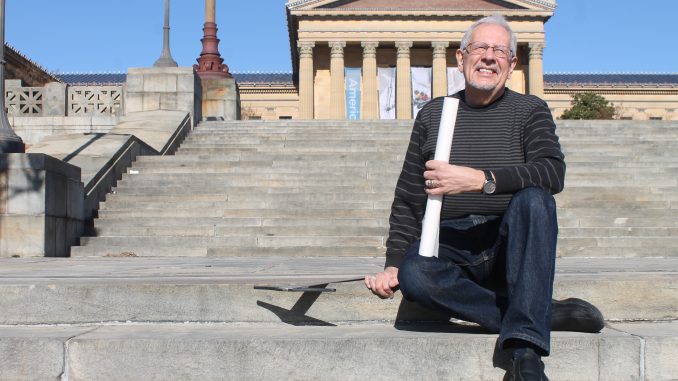
When Michael Villegas traveled to Rome in 2009, he felt small.
The 2010 architecture alumnus spent his spring semester studying architecture in Italy. He walked to class every day surrounded by buildings hundreds or thousands of years old, which he said made the historic sections of Philadelphia seem like “kid stuff.”
“When you’re trying to be a better designer and challenge yourself, knowing that stuff exists is enough to … push you to research more … and not accept subpar design,” Villegas said.
“It completely changes your perspective on your daily life here and what you might want out of your life,” he added. “Because it gives you a much more well-rounded understanding of how you fit into the world.”
In conjunction with the 50th anniversary of Temple University Rome, Villegas and six other architecture alumni and professors are planning an exhibit and talk series at the Da Vinci Art Alliance in Bella Vista. The exhibit will highlight connections between Philadelphia and Rome and will include their original work, influenced by 18th-century Roman engraver and architect Giovanni Battista Piranesi.
Architecture instructor Kenneth Jacobs helped organize the display, titled “Yo, Piranesi!” which will open on Wednesday and run through March 12. The artists each created a series of collages to express their personal memories of the trip from Philly to Rome.
Piranesi, who lived from 1720 to 1778, experienced Rome in a very pivotal time for architecture, said John Pron, a retired architecture professor. The modern Neoclassicism movement had just begun and was paralleled with a new appreciation of Rome’s ancient ruins. Instead of pillaging the old buildings, Romans were now preserving them, he said.
This created an interesting balance of old and new in the city, Pron said, which Piranesi latched onto in his elaborate etchings of Rome. Using his technical skills to celebrate the city’s past and present, Piranesi “raised the standard for what extraordinary experiences cities could be,” said Pron, who taught at Temple Rome in 1996 and 2012 and visited several other times during his career.
“Piranesi also connected vastly different eras in Rome’s long history,” Pron said. “He clearly celebrated the present Baroque city, while incorporating the major monuments of the Roman Empire long gone.”
The architects involved in the exhibit hope to challenge the way Philadelphians look at their own city by echoing Piranesi’s idea of incorporating the past and present. Jacobs said this idea came through in the movie “Rocky,” when the titular character climbed the old steps of the Philadelphia Museum of Art and looked back at the modern city behind him.
“Getting people to think about their surroundings in a different way is good because you come up with ideas and strategies that you might not have unless you put yourself in a different place,” Jacobs said. “[Art is] an easy … non-threatening way for people to put themselves in a different place.”
Villegas’ interpretation of Piranesi’s work compares the ancient ruins of Rome to what he sees as Philly’s version of ruins: old sports arenas.
“Philadelphia is a sports city before anything else,” Villegas said. “Most people would consider [stadiums] eyesores, but if they’re important enough and they sit there long enough they become memorials.”
His collages combine Piranesi’s etchings of Rome with photos of Philadelphia’s demolished arenas — like Veterans Stadium, the Spectrum and John F. Kennedy Stadium — as a way to preserve them as symbols of the city.
“We don’t get the benefit of ruins in modern society,” he added. “So how can we celebrate and preserve these historic venues for so many Philly sports fans in one image, as Piranesi did for ruins in Rome?”
Each artist had a different interpretation of the connection between the two cities, and on Saturday, an Artist’s Talk will be held for each of the architects to discuss their work.
Piranesi’s vision of Rome — one that celebrates old and new and combines the high-brow with the low-brow — makes him the “perfect” artist to represent Temple Rome, Pron said. There’s already a large, framed map of Rome etched by Piranesi that hangs in the lobby of Villa Caproni, the main classroom and studio on the Rome campus, Pron added.
“Philadelphia is a city of great uniqueness, with a strong and important past, and a dynamic present,” Pron said. “And also a city with a bright future … like Rome, how can it respect the values and images of the past, and how can it celebrate a present as important as the past?”
Emily Thomas can be reached at emily.ralsten.thomas@temple.edu.



Be the first to comment